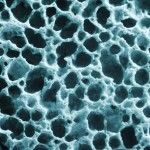
Following tooth extraction, the supporting alveolar bone remodels with a varying degree of bone resorption. The extent of bone loss may hamper subsequent implant restoration, so a wide range of grafting materials have been used with a view to prevent this loss of bone.
The aim of this review was to assess what biomaterial is the most efficient bone substitute for alveolar ridge preservation?
Methods
Searches were conducted in the Medline/PubMed, Embase, Cochrane Library, Web of Science, Scopus, the Latin American and Caribbean Health Sciences Literature (LILACS) and ClinicalTrials.gov databases. This was supplemented by manual searches of the journals; International Journal of Oral and Maxillofacial Surgery, Journal of Oral and Maxillofacial Surgery, Journal of Clinical Periodontology, Journal of Dental Research, Clinical Oral Implant Research, and International Journal of Oral and Maxillofacial Implants. Randomised controlled trials (RCTs) reporting histomorphometric results of alveolar preservation with different grafting materials providing details of biopsy harvesting methods and histological processing were considered.
Two reviewers independently screened and selected studies and extracted data with 3 reviewers independently assessing risk of bias using the Cochrane tool. The primary outcome was new bone formation (NBF) at least 3 months after tooth extraction. Secondary outcomes were the percentage of residual biomaterial and the percentage of soft tissue. An arm-based network meta-analysis was undertaken.
Results
- 38 trials (28 parallel group, 10 split-mouth) were included with 1268 extractions in 985 patients being analysed
- 35 studies were considered to be at unclear risk of bias and 3 at high risk.
- 33 trials contributed to a network meta-analysis involving comparison of 34 biomaterials.
- None of the grafting materials produced a significant effect on the percentage of NBF.
- Eight grafting materials (Bio-Oss, Salvin, Puros, Bio-Oss Collagen, Endobon, enamel matrix derivatives, FDBA, and enamel matrix derivatives plus bone ceramic) statistically reduced the quantity of NBF in the histomorphometric analysis.
Conclusions
The authors concluded: –
This systematic review suggests that there is no available grafting material able to improve the percentage of NBF between 3 and 6 months after tooth extraction.
Comments
A 2015 Cochrane review by Atieh et al (Dental Elf- 15th Jun 2015) looked at alveolar ridge preservation techniques looking only at studies with at least 6 months follow up, identifying only 8 RCTs which provided limited evidence that any techniques minimised changes in ridge height. A review the following year by MacBeth et al (Dental Elf- 14th Sep 2016) presented a slightly more optimistic conclusion. While this new review has undertaken an extensive search and included more studies than those previous reviews none of the included studies is at low risk on bias with most have lack of details regarding the randomisation process. Many of the studies have small sample sizes and bone samples were not collected from all the included patients. The studies are very heterogenous with a large variety of material being assess so few studies evaluate specific materials. Consequently, the available evidence remains very limited and high quality well-reported studies of appropriate size using common outcomes are needed to properly assess the most promising agents.
Links
Primary Paper
Canellas JVDS, Ritto FG, Figueredo CMDS, et al. Histomorphometric evaluation of different grafting materials used for alveolar ridge preservation: a systematic review and network meta-analysis [published online ahead of print, 2019 Nov 4]. Int J Oral Maxillofac Surg. 2019;S0901-5027(19)31355-4. doi:10.1016/j.ijom.2019.10.007
Other references
Dental Elf- 14th Sep 2016
Dental Elf- 15th Jun 2015
Alveolar ridge preservation: limited evidence for current techniques

Dear Sir,
you name 8 grafting materials which statistically reduced the quantity of NBF. The authors speak of 9 Materials in their anstract: “The network meta-analysis showed that nine grafting materials decreased NBF and 25 did not decrease NBF.” What is the missing material?
Thank you for your question. In the paper the forest plot for the network meta-analysis (figure 4 in the paper) clearly shows only 8 grafting materials statistically reduced the quality of NBF. None of the remaining materials demonstrated a statistically significant difference. THe authors themselves in the results section also only name just 8 materials so the use of the figue 9 in the abstract is incorrect.